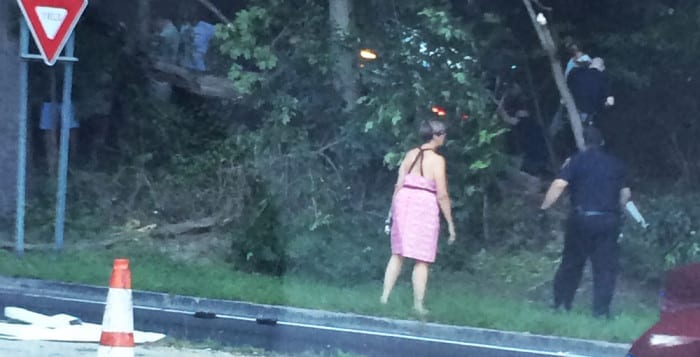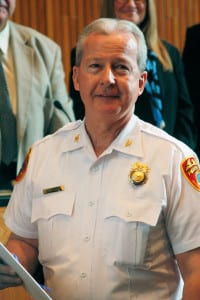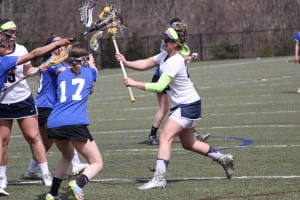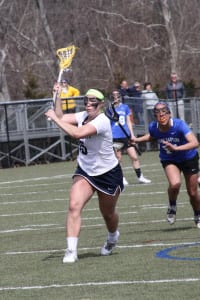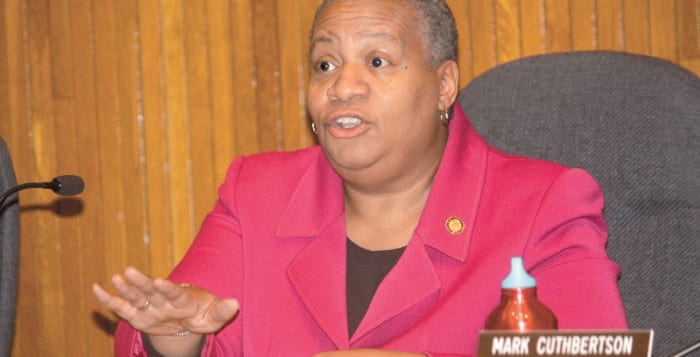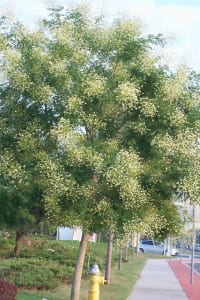By Rohma Abbas & Elana Glowatz
An elderly woman died in Cold Spring Harbor Friday evening when she lost control of her car on Woodbury Road and crashed into the woods.
The Suffolk County Police Department said 80-year-old Eugenia Kouwenhoven, a Huntington resident, was driving a 2014 Buick Regal west on the road at the time of the crash, close to 6:30 p.m. She was pronounced dead at Stony Brook University Hospital.
Woodbury Road has been the topic of much debate at Huntington Town Board meetings, as residents have cited numerous car crashes along the road. The town commissioned a traffic study of the thoroughfare, but the stretch of roadway along which Kouwenhoven crashed and lost her life is not in the traffic calming study area, according to A.J. Carter, a spokesman for the town.
“The unfortunate accident occurred on a portion of Woodbury Road that is past Cold Spring Harbor train station, which is not part of the study area,” Carter said.
Marilyn McDermott, a resident of Woodbury Road, echoed similar sentiments. She questioned whether the accident had much to do with the safety road. She was on the scene shortly after the accident and said she didn’t see any skid marks.
“I’m not sure if it was inherent of the actual dangers of the road or singular to her,” McDermott said in a Monday phone interview.
Kouwenhoven was a widow, and a mother to three children, a grandmother to 10, and a great grandmother to four, according to her obituary on A.L Jacobsen Funeral Home’s website.
Attempts to reach Kouwenhoven’s family this week were unsuccessful.
Friends of Kouwenhoven, who also went by “Jean” or “Gene,” shared some of their memories and condolences on an online tribute page.
One person spoke of Kouwenhoven’s gourmet cooking skills and her “kind and thoughtful” nature. She said Kouwenhoven would often wash and style the hair of neighborhood girls before a birthday party.
“Can you imagine someone taking the time to [style] 2 or 3 young girls’ hair?” Janet Stanton Schaaf wrote. “It took hours! I felt so pampered and so glamorous, and so cared for. What a wonderful feeling”
Schaaf continued, “Jean had such a positive impact on my life and I hope she now sees how much she added to our little Huntington neighborhood of kids. Thanks for everything, Jean.”
Cathy and Walter Kennedy also left a message honoring Kouwenhoven.
“She was so full of life and knew how to enjoy it,” they wrote. “She had a special way of wrapping herself around your heart. We feel blessed to have known her and to have shared many a time with her.”
While he’s not handling the case and doesn’t know the exact details, 2nd Precinct Dt. Sgt. James Scimoni said it’s “definitely possible” the woman could have undergone a medical emergency before crashing. But there’s no confirmation of that, he said.
On the subject of Woodbury Road traffic safety improvements, town officials have already embarked on fixes to attempt to make the road safer.
On Tuesday, the town released a statement noting that it had implemented the first phase of its traffic study consultants’ recommendations. Town highway department workers trimmed trees along the shoulder of the road, running 2.5 miles from Main Street in Huntington village to Pulaski Road in Cold Spring Harbor. The workers also replaced road signs to increase visibility — the 165 new signs are larger than the ones they replaced, including larger chevron signs to further highlight the horizontal curves in the roadway.
The town installed new turn and reverse turn signs to replace curve and reverse curve signs, bringing the signage up to federal standards. Also, the town upgraded the reflectivity of traffic signs.
“That stuff is the first phase,” Councilwoman Susan Berland (D) said in a phone interview. “Now we’re waiting for the analysis of the road for the second phase to implement the suggestions for narrowing the road, the markings and the strips in the middle.”
This story was last updated on Tuesday, Sept. 1, at 5 p.m.

